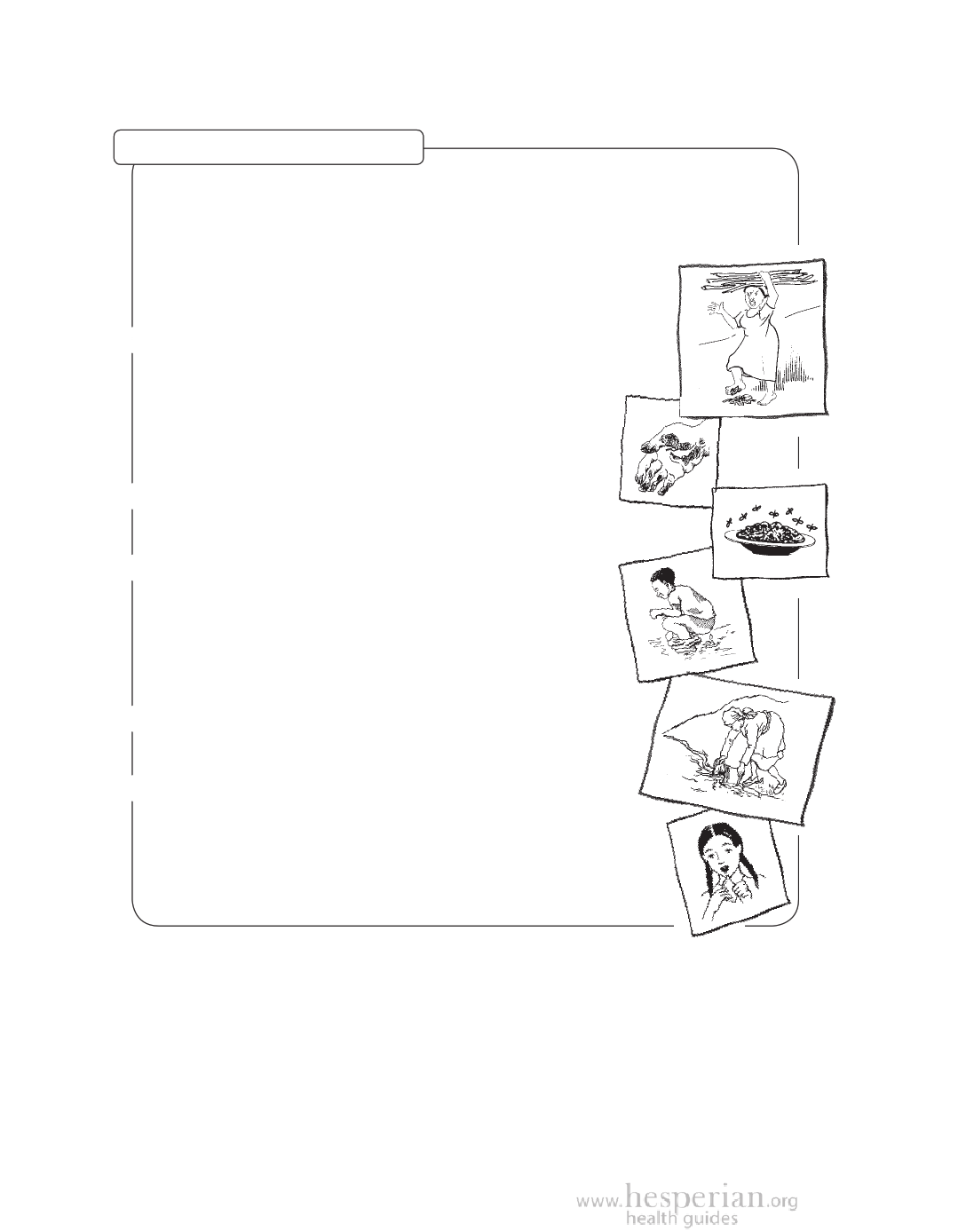
50 Health Problems from Unsafe Water
Howbdcniabxrnrhcbea diseases spread
This activity helps to show how germs that cause diarrhea pass from person to
person. People make drawings and put them together to form a story.
Time: 1 to 1½ hours
Materials: Small drawing paper, large drawing paper,
colored pens or markers, sticky tape, sample drawings
➊ Form groups of 5 to 8 people. Each person draws a picture
that shows something about how she thinks people get
diarrhea. Each drawing should show just one part of the
story of how diarrhea spreads. If a person has difficulty
drawing, she can write a word instead or get help from
someone else. It may help to have sample drawings to
stimulate group discussion.
➋ Each person shows her drawing in her small group.
The other people in the group tell what they see.
This is so every person understands the drawings.
➌ Each group puts their drawings in an order that makes a
story about how germs spread. If the group sees there are
drawings missing, they make new drawings to fit the story.
When the drawings are in order, tape them to a larger
piece of paper. Draw arrows between the drawings to
make a chart that tells a story of how germs spread.
➍ Each group shows its chart to the other groups.
The group showing the drawings tells the story of how
diarrhea passes from one person to another.
➎ The whole group discusses the activity. Is every group’s story
the same? How are the stories different? Why?
Talk about the ways diarrhea spreads. How do economic and
social conditions put people at risk? What behaviors and
beliefs put people at risk? What other ways do diseases spread
that were not illustrated in the activity?
A Community Guide to Environmental Health 2012